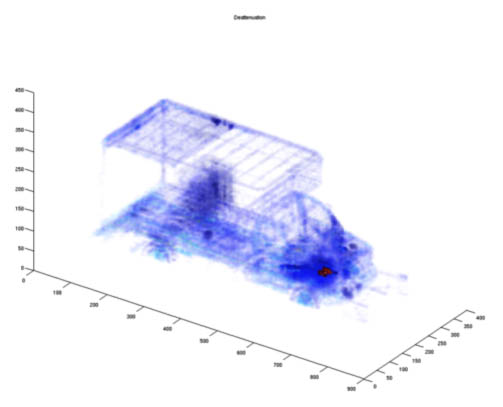The Countering Weapons of Mass Destruction (CWMD) Office was established in December 2017 by consolidating primarily the Domestic Nuclear Detection Office, a majority of the Office of Health Affairs, as well as other DHS elements.
For current information related to CWMD, please visit the following:
The Department of Homeland Security works with governments and companies around the world to strengthen the security and resiliency of the global supply chain. To help further this mission, DHS' Domestic Nuclear Detection Office (DNDO) is exploring new technologies that can identify radiological and nuclear threats at ports of entry without disrupting the flow of commerce.
Unpacking the contents of suspicious cargo containers at ports of entry is costly and time-consuming. DNDO's Shielded Nuclear Alarm Resolution (SNAR) program enables the efficient scanning of cargo containers to locate potential nuclear material -- even in the presence of countermeasures - and clear it from suspect regions.
The Technology
The scanner systems generate X-rays and/or neutrons which pass through the cargo container and interact with the materials inside. These interactions can produce high-resolution images that reveal the shapes of objects inside the container. The scanner systems can also produce physical signatures, which uniquely identify materials inside, including those that can be used to make nuclear weapons or shield nuclear materials from detection.
The technologies that are expected to provide increased operational flexibility and detection capability include:
1) Effective Atomic Number in 3D (EZ-3D™) - a technique using high-energy backscatter photons
2) Prompt Neutrons from Photo-Fission (PNPF) - a technique making use of certain neutrons released from photo-fissionable materials
3) Nuclear Resonance Fluorescence (NRF) - a technique that identifies the isotopic fingerprint of materials by measuring re-emitted photons
Current status
The technology and methods described above are being developed by Passport Systems, Inc., and funded by DNDO's Transformational and Applied Research (TAR) Directorate under competitively awarded contracts. DNDO's Transformational and Applied Research Directorate expects to complete its experiments to determine the performance capabilities of the first SNAR system around March 2012. Characterization activities for all SNAR systems will conclude in late 2012. Highlighting a technology does not constitute an express or implied endorsement by the Government.

Figure: A three-dimensional image of the contents of a container using EZ-3D™.
